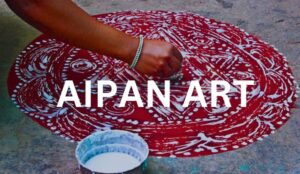Uttarakhand, nestled in the lap of the Himalayas, is not only renowned for its breathtaking landscapes but also for its vibrant cultural heritage. The state hosts a variety of festivals that reflect its rich traditions and religious fervor. Here are some prominent festivals celebrated in Uttarakhand:
Kumbh Mela:
The Kumbh Mela, a colossal religious gathering, takes place every 12 years in Haridwar, drawing millions of devotees. Pilgrims from across the country converge on the banks of the Ganges to cleanse their souls by taking a ritual dip. The air is thick with spirituality as saints, sadhus, and commoners participate in various ceremonies.
Ganga Dussehra:
Celebrated in Haridwar, Ganga Dussehra spans ten days, commemorating the descent of the Ganges to Earth. Devotees perform aartis (rituals with lamps) on the ghats, seeking blessings and purification. The river, believed to wash away sins, becomes the focal point for religious ceremonies and cultural festivities.
Magh Mela:
An annual event in Prayagraj, the Magh Mela echoes the spirit of the Kumbh Mela. Pilgrims gather on the banks of the Ganges to partake in religious rituals and cultural events. The festival holds great significance for those unable to attend the Kumbh, offering a similar experience on a smaller scale.
Nanda Devi Raj Jat Yatra:
A once-in-12-year pilgrimage, the Nanda Devi Raj Jat Yatra is a testament to the undying faith in the goddess Nanda Devi. Pilgrims embark on a challenging journey through the Himalayas, carrying a symbolic palanquin. The yatra is a unique blend of religious fervor, adventure, and community spirit.
Harela and Bhitauli:
Celebrated during the monsoon season, Harela and Bhitauli mark the onset of agricultural activities. Communities exchange greenery and symbolic gifts, symbolizing the prosperity of the upcoming harvest. The festivals highlight the symbiotic relationship between the people of Uttarakhand and the land they cultivate.
Phool Dei:
Phool Dei, a celebration of spring, sees communities adorning their homes with vibrant flowers. Young girls go from house to house, singing traditional songs and offering blessings. The festival fosters a sense of community and joy, signaling the renewal of life with the changing seasons.
Uttarayani:
Uttarayani, synonymous with Makar Sankranti, is a harvest festival celebrated with zest. Kite flying takes center stage as colorful kites dot the skies, symbolizing the transition of the sun into the northern hemisphere. The festival reflects the agrarian roots of the region.
Basant Panchami:
Dedicated to the goddess Saraswati, Basant Panchami marks the onset of spring. Educational institutions organize prayers and events to seek the blessings of the goddess of wisdom and knowledge. The festival adds a cultural and spiritual dimension to the academic pursuits of the community.
Butter Festival:
The Butter Festival, known as “Anduri Utsav,” is a lively celebration in Uttarakhand, India, highlighting the region’s rich culture and agricultural practices. Held annually, it revolves around the traditional art of making butter from fresh milk. Villagers, dressed in traditional attire, participate in butter-making competitions, showcasing their skills. The festival includes colorful decorations, local cuisine featuring butter, and cultural performances. It holds cultural and religious significance, symbolizing gratitude for abundant harvests. The Butter Festival is a vibrant blend of tradition, community, and appreciation for Uttarakhand’s cultural heritage.
Conclusion
In Uttarakhand, festivals are not merely events but a way of life, intertwining spirituality, community bonds, and a deep reverence for nature. Each celebration is a reflection of the state’s cultural diversity and its people’s unwavering connection to their roots.
FAQs Related to Festivals of Uttarakhand
1. What is the significance of the Kumbh Mela in Uttarakhand?
The Kumbh Mela in Uttarakhand is a major religious gathering held every 12 years in Haridwar. Devotees believe that taking a dip in the sacred Ganges River during this event cleanses them of sins and brings spiritual purification.
2. How often does the Nanda Devi Raj Jat Yatra take place?
The Nanda Devi Raj Jat Yatra is a unique pilgrimage that occurs once every 12 years. Pilgrims embark on a challenging journey to the Nanda Devi Temple in the Himalayas, carrying a symbolic palanquin to express their devotion to the goddess.
3. What is the agricultural significance of Harela and Bhitauli festivals?
Harela and Bhitauli festivals in Uttarakhand mark the beginning of the monsoon season and the sowing of seeds. These celebrations involve the exchange of greenery and symbolic gifts, symbolizing the prosperity of the upcoming harvest and the close bond between the people and the land.
4. How do communities celebrate Phool Dei in Uttarakhand?
Phool Dei is a spring festival where communities in Uttarakhand decorate their homes with colorful flowers. Young girls go from house to house, singing traditional songs and offering blessings, fostering a sense of community and joy during the changing seasons.
5. What is the significance of kite flying during Uttarayani in Uttarakhand?
Uttarayani, synonymous with Makar Sankranti, is a harvest festival celebrated with enthusiasm in Uttarakhand. Kite flying is a popular activity during this festival, symbolizing the transition of the sun into the northern hemisphere and adding a vibrant cultural element to the celebrations.





